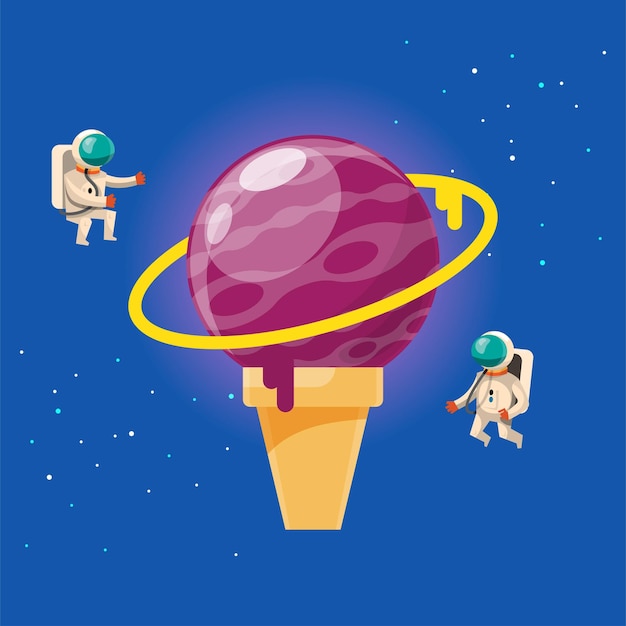Saturn – Fascinating Facts About the Ringed Planet

Did you know that Saturn is the second largest planet in our solar system?
Saturn is known for its beautiful and iconic rings.
There are actually thousands of individual rings that make up Saturn’s ring system.
If you could float on water, Saturn would be the perfect place to do it because it has a lower density than water.
Saturn has the sixth fastest rotation period of any planet in our solar system.
The atmosphere on Saturn is composed mostly of hydrogen and helium.
Saturn has the most moons of any planet in our solar system – a whopping 82!
One of Saturn’s moons, Titan, is larger than the planet Mercury.
Titan is also the only moon in our solar system known to have a dense atmosphere.
Saturn is named after the Roman god of agriculture and wealth.
The famous Cassini spacecraft orbited Saturn for 13 years, providing us with incredible images and data.
The rings of Saturn are made up of primarily ice particles, which range from tiny grains to massive chunks.
Saturn experiences seasons, just like Earth, but they last approximately seven years each.
Saturn’s rings are only about 30 feet thick, but they extend up to hundreds of thousands of miles in diameter.
Scientists believe that the rings around Saturn were formed from either a captured comet or the break-up of a moon.
Saturn’s rings are constantly changing and evolving due to gravitational interactions with moons and other particles.
Saturn – Fascinating Facts About the Ringed Planet part 2
The particles in Saturn’s rings orbit the planet at different speeds depending on their distance from the planet’s center.
Saturn’s rings actually have gaps, known as gaps or divisions, which are caused by the gravitational effects of Saturn’s moons.
The largest gap in Saturn’s rings is the Cassini Division, which is 4,800 kilometers wide.
Saturn’s rings are named alphabetically in the order they were discovered, from A to G.
Saturn’s rings are very bright and can be seen from Earth with a small telescope.
Saturn has hundreds of storm systems in its atmosphere that create a mesmerizing array of patterns and shapes.
Saturn’s storm patterns can last for months or even years at a time.
The hexagonal cloud pattern at Saturn’s north pole is one of the most fascinating features observed by the Cassini spacecraft.
Saturn’s magnetic field is 578 times stronger than Earth’s.
Saturn’s magnetic field is so strong that it extends beyond the planet’s atmosphere and creates a bubble called a magnetosphere.
Saturn’s moon Enceladus is thought to potentially support life, as it has a subsurface ocean of liquid water.
Saturn’s moon Enceladus also has geysers that shoot water vapor into space, creating a magnificent spectacle.
The ice particles in Saturn’s rings are thought to be as small as grains of sand or as large as houses.
If you could find a bathtub big enough, Saturn would actually float in water due to its low density.
Saturn is the least dense planet in our solar system.
The distance between Saturn and the Sun is approximately 1.4 billion kilometers (886 million miles).
A day on Saturn is equivalent to 10.7 Earth hours.
Saturn’s temperature ranges from -178 degrees Celsius (-288 degrees Fahrenheit) to -180 degrees Celsius (-292 degrees Fahrenheit).
Saturn is a gas giant, which means it has no solid surface like Earth or Mars.
The first telescope observation of Saturn’s rings was made by Galileo Galilei in 16
The rings of Saturn were first identified as separate entities by Dutch scientist and astronomer Christiaan Huygens in 1655.
Saturn has a very faint, thin outer ring called the Phoebe ring that orbits the planet at a distance of about 12 million kilometers (7.5 million miles).
Saturn’s rings are so wide that they could fit almost 300 Earths side by side.
The famous ringed planet is visible to the naked eye from Earth, making it a popular target for stargazers.
Astronomers believe that the rings of Saturn are relatively young, only about 100 million years old.
The rings of Saturn are incredibly bright, reflecting about 90% of the sunlight they receive.
Saturn has a relatively small core, about 15 times the mass of Earth.
Saturn’s rings cast a shadow on the planet’s cloud tops, creating a stunning visual effect.
Saturn’s rings are a source of constant fascination and study for scientists, who continue to unravel their mysteries.

